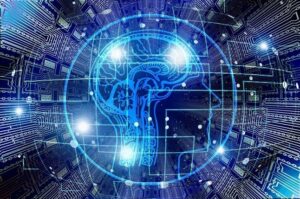Unleash the potential of AWS for AI development: Master the strategies and best practices.
Introduction:
Harnessing the Power of AWS for AI Development: Key Strategies and Best Practices
As artificial intelligence (AI) continues to revolutionize industries across the globe, organizations are increasingly turning to cloud computing platforms like Amazon Web Services (AWS) to develop and deploy their AI solutions. AWS offers a comprehensive suite of services and tools that enable businesses to leverage the power of AI and machine learning (ML) at scale.
In this article, we will explore the key strategies and best practices for harnessing the power of AWS for AI development. We will delve into the various AWS services that are specifically designed for AI, such as Amazon SageMaker, AWS DeepLens, and AWS DeepRacer. Additionally, we will discuss the importance of data preparation, model training, and deployment optimization in the AI development process.
By following these strategies and best practices, organizations can effectively leverage AWS to accelerate their AI development initiatives, improve model accuracy, and drive business value. Let’s dive in and explore the world of AI development on AWS.
Leveraging AWS Services for AI Development: Key Strategies and Best Practices
Artificial Intelligence (AI) has become an integral part of many industries, revolutionizing the way businesses operate and making processes more efficient. With the advancements in AI technology, developers are constantly seeking ways to harness its power and leverage it for their applications. One platform that has emerged as a leader in AI development is Amazon Web Services (AWS). In this article, we will explore key strategies and best practices for leveraging AWS services for AI development.
One of the first steps in harnessing the power of AWS for AI development is to understand the various services it offers. AWS provides a wide range of AI services, including Amazon Rekognition, Amazon Polly, and Amazon Lex. Each service is designed to address specific AI needs, such as image recognition, text-to-speech conversion, and natural language understanding. By familiarizing yourself with these services, you can choose the ones that best suit your AI development requirements.
Once you have identified the AWS services that align with your AI development goals, it is crucial to design your architecture in a scalable and cost-effective manner. AWS offers a range of tools and services, such as Amazon EC2 and Amazon S3, that enable you to build scalable and reliable AI applications. By leveraging these tools, you can ensure that your application can handle increasing workloads and deliver consistent performance. Additionally, optimizing your architecture for cost efficiency will help you make the most of your AWS resources and minimize unnecessary expenses.
Another key strategy for harnessing the power of AWS for AI development is to leverage pre-trained models and datasets. AWS provides a vast collection of pre-trained models and datasets through services like Amazon SageMaker and AWS DeepLens. These models and datasets can serve as a starting point for your AI development, saving you time and effort in training your own models from scratch. By building upon these pre-trained models, you can accelerate your AI development process and achieve faster time-to-market.
In addition to leveraging pre-trained models, it is essential to continuously train and fine-tune your AI models to improve their accuracy and performance. AWS offers services like Amazon SageMaker and AWS DeepRacer that facilitate the training and optimization of AI models. By regularly retraining your models with new data and fine-tuning their parameters, you can ensure that your AI application stays up-to-date and delivers accurate results. This iterative approach to model training is crucial for achieving optimal performance and staying ahead in the rapidly evolving field of AI.
Furthermore, it is important to consider the security and privacy aspects of your AI development on AWS. AWS provides robust security features, such as encryption and access control, to protect your AI models and data. By implementing these security measures, you can safeguard your AI application from unauthorized access and ensure compliance with data protection regulations. Additionally, it is crucial to regularly monitor and analyze the performance of your AI application to identify any potential vulnerabilities or issues.
In conclusion, harnessing the power of AWS for AI development requires a strategic approach and adherence to best practices. By understanding the various AWS services, designing a scalable and cost-effective architecture, leveraging pre-trained models, continuously training and fine-tuning your models, and prioritizing security and privacy, you can maximize the potential of AWS for your AI development. With the right strategies and best practices in place, you can unlock the full potential of AI and drive innovation in your business.
Optimizing AI Workflows on AWS: Key Strategies and Best Practices
Optimizing AI Workflows on AWS: Key Strategies and Best Practices
Artificial Intelligence (AI) has become an integral part of many industries, revolutionizing the way businesses operate and making processes more efficient. With the increasing demand for AI solutions, developers are constantly seeking ways to optimize their workflows to deliver high-quality results in a timely manner. Amazon Web Services (AWS) offers a comprehensive suite of tools and services that can greatly enhance AI development. In this article, we will explore key strategies and best practices for harnessing the power of AWS to optimize AI workflows.
One of the first steps in optimizing AI workflows on AWS is to choose the right set of services that align with your specific requirements. AWS offers a wide range of services, including Amazon SageMaker, AWS Lambda, and Amazon EC2, among others. Understanding the capabilities and limitations of each service is crucial in making informed decisions. For example, Amazon SageMaker provides a fully managed environment for building, training, and deploying machine learning models, while AWS Lambda allows you to run code without provisioning or managing servers. By selecting the appropriate services, you can streamline your workflow and maximize efficiency.
Another key strategy is to leverage AWS’s scalability and elasticity to handle large datasets and complex AI models. AI development often involves processing massive amounts of data, which can be challenging without the right infrastructure. AWS provides scalable storage options such as Amazon S3 and Amazon EBS, allowing you to store and retrieve data quickly and efficiently. Additionally, services like Amazon EC2 Auto Scaling enable you to automatically adjust the number of instances based on demand, ensuring optimal performance and cost-effectiveness.
To further optimize AI workflows, it is essential to implement robust monitoring and logging mechanisms. AWS CloudWatch, for instance, enables you to collect and track metrics, monitor log files, and set alarms. By closely monitoring your AI applications, you can identify performance bottlenecks, detect anomalies, and take proactive measures to ensure smooth operation. Logging is equally important for troubleshooting and debugging purposes. AWS CloudTrail provides a comprehensive audit trail of API calls, allowing you to trace actions taken by users and services, ensuring accountability and security.
Automation plays a crucial role in optimizing AI workflows on AWS. By automating repetitive tasks, you can save time and reduce the risk of human error. AWS offers various automation tools, such as AWS Step Functions and AWS Batch, which allow you to define and execute complex workflows. With AWS Step Functions, you can coordinate multiple AWS services into serverless workflows, while AWS Batch enables you to run batch computing workloads efficiently. By leveraging these automation tools, you can streamline your AI development process and focus on higher-value tasks.
Lastly, it is important to prioritize security and compliance when optimizing AI workflows on AWS. AWS provides a robust security framework, including identity and access management, encryption, and network security. By following best practices such as implementing multi-factor authentication, encrypting data at rest and in transit, and regularly patching and updating software, you can ensure the confidentiality, integrity, and availability of your AI applications. Compliance with industry regulations, such as GDPR or HIPAA, should also be a top priority to avoid legal and reputational risks.
In conclusion, optimizing AI workflows on AWS requires careful consideration of the right services, scalability, monitoring, automation, and security. By following these key strategies and best practices, developers can harness the power of AWS to streamline their AI development process, deliver high-quality results, and stay ahead in the rapidly evolving AI landscape.In conclusion, harnessing the power of AWS for AI development requires key strategies and best practices. These include understanding the specific AI requirements, selecting the appropriate AWS services, optimizing data storage and processing, implementing scalable and reliable architectures, leveraging machine learning frameworks and tools, ensuring data security and privacy, and continuously monitoring and optimizing AI models. By following these strategies and best practices, organizations can effectively utilize AWS to develop and deploy AI solutions that drive innovation and business growth.











